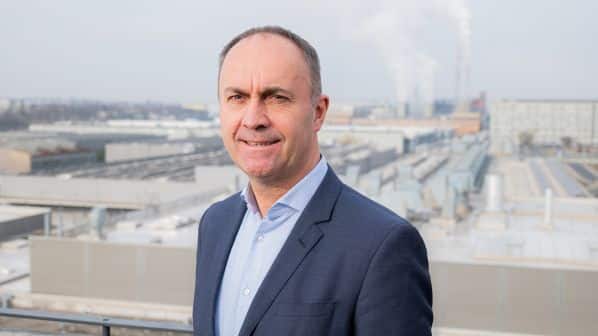ONLY from the roof of the six-storey administrative building at Škoda Group’s factory in Pilsen, Czech Republic, can one truly appreciate the scale of this vast and historic site. The various manufacturing halls built at different stages in the plant’s more than 160-year history stretch out almost as far as the eye can see, hinting at Pilsen’s importance as a key industrial centre for Eastern Europe.
Škoda Works first began building locomotives in Pilsen in the 1920s as the plant diversified from producing armaments. It also began manufacturing electric propulsion equipment for trams in the early 1920s and trolleybuses in the 1930s, which continued after World War II. Škoda Works was broken up following the fall of communism in 1989, with Škoda Group (Transportation) sold to private investors in 2002.
While the rail manufacturer no longer occupies all of the buildings and the workforce is a fraction of the 40,000 people who worked here during its heyday, Pilsen and Škoda are embarking on an exciting new chapter in their storied history.
A tour of the factory reveals a buzz of activity. Manufacturing of metro trains for Warsaw, LRVs for the German cities of Mannheim, Heidelberg and Ludwigshafen, as well as Bratislava and Brno are underway, along with RegioPanter EMUs for Czech Railways (ČD) and several Czech regions in various halls. Some trains are also in position awaiting testing on the 780m outside track.
Inside, space is at a premium, particularly for storage of components, with at least one temporary structure erected to boost capacity. Another previous storage area has been converted to a new testing facility to help boost vehicle output. The neighbouring Škoda facility, which produces traction equipment for rail vehicles ranging from high-power locomotives to LRVs, is equally busy.
The upturn in production is the result of a surge of rolling stock contracts awarded in Eastern Europe, notably the Czech Republic, Slovakia, Estonia and Latvia, between 2018 and 2020. This coincided with the acquisition by Czech financiers PPF Group of Škoda Group in 2018 from CEIL, which had purchased the company in 2011.
The company subsequently increased revenue by 11.3% in 2020 to €470m. Sales increased by another 40.6% in 2021 to reach €604.4m. The order backlog in 2021 was €3.3bn, up by 10.7% on the €2.93bn reported in 2020. Results for 2022 have yet to be released, but Škoda Group CEO, Mr Didier Pfleger, expects a similarly positive result. “I don’t think anybody in the industry today, tier 1 or tier 2 suppliers, has had growth of 50% in the last few years,” he says.
Pfleger joined Škoda in February 2022 and says that the biggest challenge facing the company under his leadership is to manage this growth while continuing to deliver further expansion. “We are a tier 2, which means we are smaller than the big suppliers,” he continues. “We don’t have a worldwide set-up like Alstom and Siemens, or Stadler and CAF, which are starting to become big tier 1s. Our target is not to become a big tier 1, but to grow and remain a solid tier 2, expanding our portfolio and our international presence in Eastern Europe, the CIS and other areas.”
Pfleger expects Pilsen alone to deliver 300 cars in 2023 compared with 160-200 in 2022, while Škoda’s other main Czech manufacturing site in Ostrava is expected to manufacture 200 cars, up from 50 a few years ago. The Škoda Transtech site in Oulu, Finland, is also busy delivering LRVs and passenger coaches for the Nordic market.
The order by Finnish operator VR for an initial nine and up to 30 overnight coaches and 30 car-carrying wagons, confirmed in December, was a significant recent success for this division of the company.
Overall production hours across the company have increased from 2.5 million in 2020 to 4.5 million in 2022. To meet demand, Škoda has more than doubled its headcount during this period to nearly 8000 staff. Yet Pfleger says the manufacturer still needs more people - a press release issued on March 3 confirmed that the company is looking for 500 extra workers in Ostrava this year. Recruitment is, though, proving difficult.
Ukraine has been a traditional source of labour for Czech firms but the war has hampered efforts to lure skilled blue-collar professionals across the border. Škoda is looking to widen its net and Pfleger says he is hopeful of working with the Czech government to increase work permit quotas for countries including Turkey, Georgia, the Philippines and Indonesia. He adds that Škoda is also “monitoring the market” for a release of local workers from companies that might be impacted by the current economic crisis, although he says there are no significant changes as of yet.
The manufacturer is matching its investment in new staff by improving industrial facilities and capacity at its sites, spending around €100m in each of the last three years. Likewise, orders for 45 six-car metro trains for Warsaw and 32 four-car 1520mm-gauge EMUs for Latvia, both of which are based on new platforms requiring significant investment in research and development, have partly contributed to a 20% increase in engineering capacity in the last two years, both internally and by using more exterior contractors.
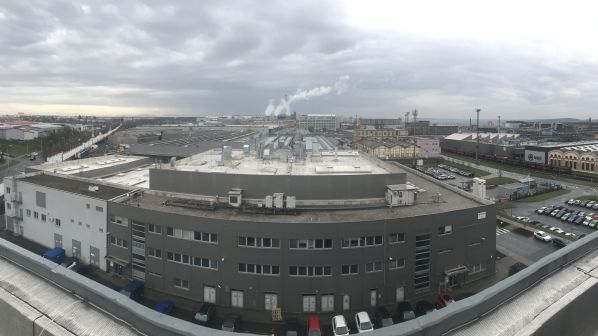
showing the vast plant in Pilsen.
Among the additions are a new paint shop and what Pfleger describes as the largest gantry machining centre in Eastern Europe, which have been installed in Ostrava, where two new production lines have been added. Pilsen also has a new paint shop, a new bogie production facility, additional assembly lines and the new testing area. The company has bought two welding robots while it has invested extensively to improve logistics capabilities at manufacturing sites, including introducing automatic storage facilities and constructing new buildings. It also recently transformed a former maintenance site in Ostrava, which it purchased in 2021 from DPO, the city’s public transport operator, into an assembly facility for LRVs.
“As the workforce is quite limited in the Czech Republic, we can only increase revenue further by being more efficient,” Pfleger says. “This requires investment in new tools and production facilities and in new automation.”
Internationalisation
A native of France, Pfleger joined Škoda from Alstom where he worked for more than a decade, serving as a member of the manufacturer’s executive board, as the president of the Middle East, Africa and Central Asia region, and as the head of its electric bus unit, Aptis.
His appointment is reflective of growing internationalism within Škoda as PPF encourages expansion beyond its traditional marketplace. English is now the preferred language for internal communication while Pfleger’s senior management team increasingly has an international flavour; head of production, Mr Radoslaw Banach, worked at Alstom’s Polish unit, while two recent recruits, Mr Jan Christoph Harder, the new president of Škoda’s region west, and Mr Laurent Fromont, senior vice-president of rolling stock engineering, are well known in the global rail industry - Harder has more than 25 years of rail industry experience, including stints at Alstom, Siemens and Molinari Rail, while Fromont worked for Alstom for nearly 31 years.
Pfleger says he is focusing on improving internal efficiency throughout the company. Key to this initiative is a corporate transformation programme, which includes the Škoda Transformation and Efficiency (Step) strategy. Pfleger says this will be implemented for two to three years and consists of three main pillars: portfolio expansion, including into new international markets; product innovation and product development; and efficiency or reset, which focuses on introducing and improving lean management principles, implementing Environmental, Social and Governance (ESG) principles, digitalisation, and production efficiency.
Škoda worked closely with management consultants to develop Step and several KPIs are measuring progress. Changes include the introduction of new management practices, from the shopfloor right up to CEO level. Lean management is very much in evidence at Pilsen. All teams have a start of shift meeting at a fixed central location where specific messages are posted on a board and where line managers present and discuss daily objectives with the team. Even items such as tool stores are now carefully labelled, bearing the outline of each tool to speed up correct replacement and collection by the next worker.
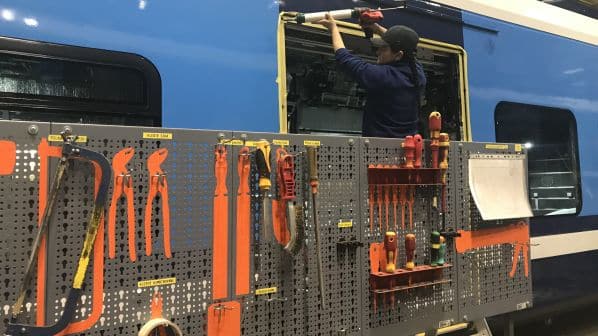
the factory halls in Pilsen.
“We hope this will stabilise the performance of the organisation and help us to grow even further,” Pfleger says. “We believe that with the current set-up of production capacity and efficiency, we can improve capacity by a further 25% by making those facilities more efficient.”
Škoda is also focusing heavily on digitalisation. New SAP and other asset management tools are helping to improve efficiency. In addition, research and development activities are playing a prominent role in boosting the company’s know-how. For example, Škoda’s Digital Technology Centre has supported the development of collision avoidance technology for LRVs, trials with which are underway in Tampere, Finland. The company also commenced work to develop a new generation of EMUs and LRVs at the end of 2022, with an emphasis on reducing costs to become more competitive. “Our competitors are not waiting for us,” Pfleger says. “They are investing a lot more than we are on this, so we need to catch up.”
In addition, he says there is a significant focus on enhancing engineering skills within the group. “Electronic, digital and software competencies will be key for the future,” Pfleger continues. “That is why one of our core targets is to double the number of engineers and our expertise in these areas, in the Czech Republic but also outside. We are planning to add more than 70 engineers in Finland.”
Acquisitions
While much of the focus is on internal improvements, Škoda is seeking inorganic growth to expand its skills base and product offers, making some eye-catching moves in the early months of 2023.
The acquisition of a 93.9% stake in The Signalling Company was confirmed in February. The Signalling Company was formed as a joint venture of Belgian firms ERTMS Solutions and private freight operator Lineas and designs software up to SIL-4, which is fully compatible with the current ETCS standard and applicable to autonomous operation. The company’s current contracts include the installation of ETCS equipment on 110 locomotives operated by Lineas.
Škoda has taken on The Signalling Company’s 38 employees and has established a signalling division under the leadership of Mr Stanislas Pinte, Škoda’s new vice-president of signalling and one of two The Signalling Company executives to join Škoda following the acquisition.
“For The Signalling Company we had to act quite quickly because we were not the only ones interested.”
Didier Pfleger
Pfleger explains that the acquisition secures the future of Škoda’s own ERTMS solution, meaning it is no longer reliant on its competitors to equip its vehicles, an increasingly common situation and potentially a hindrance to Škoda’s competitiveness in bidding for new orders. Pfleger says The Signalling Company will remain a company in its own right and will continue to sell its onboard solutions to other suppliers which do not possess this level of technology. In addition, possession of a SIL-4 solution will also support Škoda’s growing efforts in automatic train operation (ATO) and automatic train control (ATC), as well as development of its collision avoidance system for LRVs, and smart depots.
“We think The Signalling Company’s solution is more efficient, cheaper, and more adaptable to specific cases,” Pfleger says.
The other major acquisition is Molinari Rail Austria, which was also confirmed in February. The Austrian division of the Swiss engineering consultancy went into administration in November 2022 and Pfleger says the 40 people who have joined Škoda offer high levels of competence in certification, a key element of ERTMS, but also for rolling stock. Expertise in hydrogen and hybrid trains are also interesting additions, while Molinari’s presence in Austria also potentially opens the door to a new market, as well as improving prospects in neighbouring Switzerland and Germany.
“In terms of expertise, they are quite complementary and aligned with what we want to achieve,” Pfleger says. “It was quite a quick process, but we are able to move decisively when we have to. For The Signalling Company we had to act quite quickly because we were not the only ones interested.”
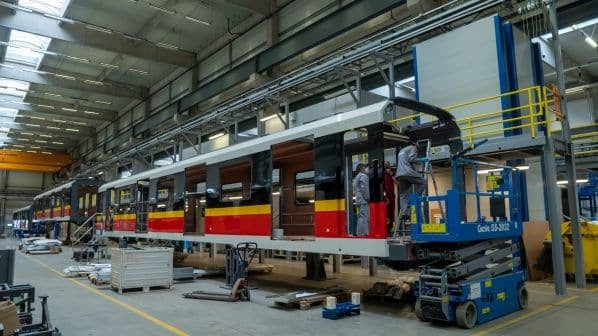
under construction at the Pilsen factory.
Pfleger is clear that Škoda will not rule out other acquisitions, particularly small opportunities in service, maintenance, signalling and digitalisation. He also praises the synergies offered by companies within the wider PPF Group, including telecommunications operator O2 Czech Republic for offering access to 5G technology, which is supporting development of new telecommunications infrastructure for the light rail network in Pilsen. There are, though, “no regrets” after Škoda did not prevail in purchasing the Reichshoffen plant in France from Alstom, for which the manufacturer was confirmed as a leading contender before CAF ultimately secured the deal.
“We achieved the same level of growth simply through our own organic investment,” Pfleger says.
The market environment has changed quite significantly since the PPF takeover. The Covid-19 pandemic inevitably led to delays for several projects, while the subsequent supply chain and inflationary issues have put added pressure on OEMs. The war in Ukraine and consequential energy crisis has added to these concerns.
Pfleger says the average delivery schedule for rolling stock has lengthened. For a project that would normally take 30-36 months, it is now taking 40-45. “The effect is not only on us, it is on our customers, with increasing prices and delivery schedules,” Pfleger says. “That’s something we cannot avoid and is a consequence of the macroeconomic situation.”
While Pfleger says there were concerns in September and October 2022 about how high prices would rise, the situation has now largely stabilised, albeit with costs slightly higher than before. In the meantime, the company has attempted to mitigate its exposure to future uncertainty in the energy market by pursuing greater energy independence. It has installed solar panels on the roofs of its factories, which Pfleger says should meet more than 50% of the energy demand at Pilsen alone. In Finland the company has a long-term agreement with a wind farm to supply its energy.
Supply chain
Nevertheless, concern continues to persist over the impact of inflation on the supply chain. Pfleger says Škoda has passed on some cost increases to its customers, activating the relevant contract clauses. It was also lucky in that many of the materials and components it requires were delivered before the crisis. Yet with 70% of its suppliers based in the Czech Republic, Pfleger says the company needs to expand and diversify its supply chain to increase its competitiveness. Turkey, other Eastern European countries, and Asian suppliers are all potential partners, although he is aware of the limitations imposed by higher comparative transport costs and concerns over sustainability.
“We have doubled our capacity for supplier development in the last year to develop new capacities and new suppliers outside our core market to mitigate this,” Pfleger says. “We are now seeing the first effects of that. We cannot avoid inflation, but we can at least control it better.”
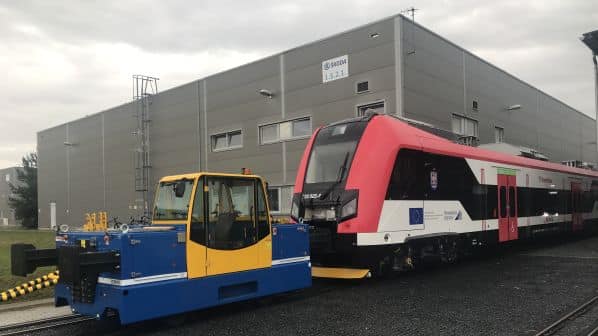
Looking ahead, Pfleger is buoyed by tendering activities in the Czech Republic. ČD issued a tender for up to 47 dual-voltage EMUs, including 15 years of maintenance, in January. The renewal of several regional operating contracts also includes requirements to update fleets, some of which date from the 1970s and 1980s. A tender issued by ČD in December is inviting bids to supply 15 battery-electric multiple-units for the Moravian-Silesian region and the operator has confirmed its intention to order more of these trains for the Czech regions. Škoda is already supplying four RegioPanter multiple-units retrofitted with batteries to Moravia-Silesia, and Pfleger says the supplier is further developing its capabilities in this area to meet expected demand.
Overall, ČD expects to invest Koruna 100bn ($US 4.67bn) in new trains by 2030 and already has 110 RegioPanters on order from Škoda, as well as 76 trains from Pesa and 20 ComfortJet 230km/h push-pull sets being built by a consortium of Škoda and Siemens. Demand from ČD’s domestic competitors is also expected to grow as they increase their respective market shares, while on the urban side, Škoda is a front runner in a tender for 200 LRVs announced by Prague’s public transport operator, DPP, in November.
“We have to maintain our position in our home market - this is one of our priorities for 2023,” Pfleger says. “Competition will be tough. Our competitors will be fighting for these opportunities like we are.”
Yet there is an understanding that to remain competitive, Škoda cannot rely on the Czech Republic alone. Pfleger says the recent order from Finland could position Škoda as a leading contender to supply rolling stock for overnight services in other European countries, where demand is expected to grow, albeit in what is still a small market segment. Service is another area where Pfleger believes the company can grow, with the caveat that it must expand its presence in other countries to be closer to customers, with Ukraine and Germany possible targets. He is similarly keen to maintain the company’s leadership in the trolleybus market, and even expand its reach on the bus side, including into “large markets” such as Kazakhstan, India or Korea, where Škoda “can bring its technical competencies” in traction systems.
“We have silicon carbonite technologies and permanent magnet motors, which we have not yet completely industrialised,” Pfleger says. “These are potential growth areas.”
While not expecting to replicate its recent annual growth of 40% in the coming years, Pfleger says the target is now 10%. If achieved, this will deliver his goal of establishing Škoda as a leading tier 2 supplier. It will also provide fleet owners in a growing number of markets with an increasingly credible alternative to the tier 1s, aiding the competitiveness of the European rolling stock supply and maintenance sector, an especially welcome development following a period of sustained consolidation.
